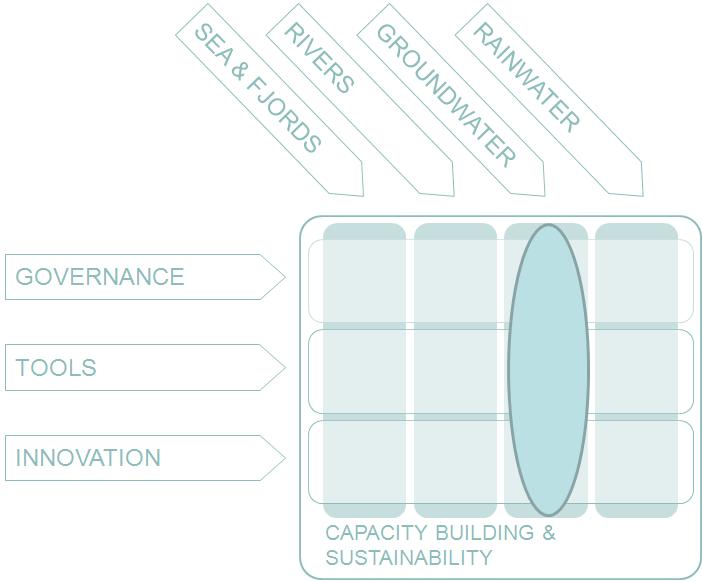Beneficiary responsible for implementation:
Central Denmark Region (CDR)
Budget: 131.591 €
Number of days estimated spent on action in phase 1: 160 Days
Role: C2C CC project management (CDR) take on the role as a facilitator, coordinator and networking body of the CCA activities.
Relation to Climate Change Adaption (CCA) plans:
18 of the 21 municipalities mention challenges related to groundwater in their CCA plans (cf. Figure 1).
Linked to Complementary Actions:
- “WaterCoG”: A project around the North Sea involving eight beneficiaries from DK, NL, SE and UK. The focus is on improved water governance in the private and public sector and includes pilots in the region. Testing and demonstrating new management tools. The WaterCoG and C2C CC will have strong synergies in relation to water management, planning and stakeholder involvement. Complements C0. (funded by InterregVB).
- “TOPSOIL”: Focusing on issues related to rising groundwater levels and related climate change implications. Includes beneficiaries from DK, DE, NL, BE and UK and will add European aspects on groundwater to C2C CC. Complements C4 ( funded by InterregVB).
Description (what, how, where and when):
Climate change in Denmark is expected to lead to increased rainfall in autumn and winter, and less during summer, causing increased near-surface groundwater levels, especially during autumn and winter.
An increase in groundwater levels varies across the regional geography and depends on e.g. geology, distance to the sea, land use, drainage and elevation of the area.
This challenge is new, and municipalities are uncertain about how to deal with the problems of high groundwater levels.
First, there is a lack of knowledge - where can we expect the groundwater to rise? How do we measure the changes?
Secondly, there is a lack of measures - what is the right thing to do in the areas prone to rising groundwater levels?

Figure 10: Investigations on soil conditions

Figure 11: A groundwater flooded area in the eastern part of CDR
The objective of this action is to increase the knowledge and resilience towards rising nearsurface groundwater optimizing the use of surplus groundwater.

